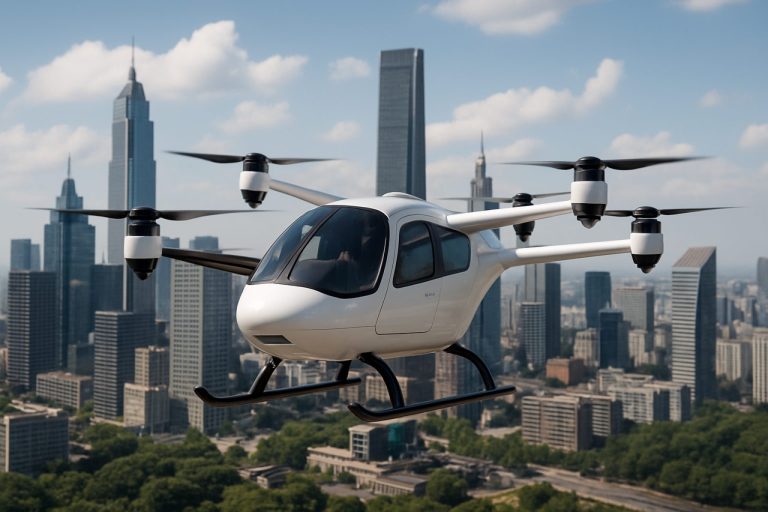
Edge AI Gesture Recognition Systems Market Report 2025: In-Depth Analysis of Technology Advancements, Competitive Dynamics, and Global Growth Projections. Explore Key Drivers, Regional Trends, and Strategic Opportunities Shaping the Industry.
- Executive Summary & Market Overview
- Key Technology Trends in Edge AI Gesture Recognition
- Competitive Landscape and Leading Players
- Market Growth Forecasts (2025–2030): CAGR, Revenue, and Volume Analysis
- Regional Market Analysis: North America, Europe, Asia-Pacific, and Rest of World
- Future Outlook: Emerging Applications and Innovation Pathways
- Challenges, Risks, and Strategic Opportunities
- Sources & References
Executive Summary & Market Overview
Edge AI gesture recognition systems represent a rapidly evolving segment within the broader artificial intelligence and human-machine interface (HMI) markets. These systems leverage on-device AI processing to interpret human gestures in real time, enabling intuitive, touchless control across a range of applications—from consumer electronics and automotive interfaces to industrial automation and healthcare devices. Unlike cloud-based solutions, edge AI gesture recognition processes data locally, reducing latency, enhancing privacy, and improving reliability, which are critical factors for user experience and regulatory compliance.
The global market for edge AI gesture recognition systems is poised for significant growth in 2025, driven by advancements in embedded AI hardware, the proliferation of smart devices, and increasing demand for contactless interaction post-pandemic. According to International Data Corporation (IDC), the edge AI market is expected to surpass $40 billion by 2025, with gesture recognition constituting a key application area. The integration of dedicated AI accelerators in chipsets from companies such as Qualcomm and NVIDIA has enabled real-time gesture processing on smartphones, wearables, and automotive infotainment systems.
In the automotive sector, leading manufacturers are incorporating edge AI gesture recognition to enhance driver safety and convenience, as seen in the latest models from BMW and Mercedes-Benz. Meanwhile, consumer electronics giants like Samsung and Sony are embedding gesture control in smart TVs, AR/VR headsets, and home automation devices. The healthcare industry is also adopting these systems for sterile, touchless control in operating rooms and patient monitoring, as highlighted by Frost & Sullivan.
- Key Market Drivers: Rising demand for contactless interfaces, advancements in edge AI chipsets, and growing adoption in automotive and healthcare sectors.
- Challenges: High integration costs, interoperability issues, and the need for robust security and privacy measures.
- Regional Trends: North America and Asia-Pacific are leading in adoption, with significant R&D investments and early commercialization.
Overall, 2025 is set to be a pivotal year for edge AI gesture recognition systems, with expanding use cases, technological breakthroughs, and increasing market competition shaping the industry landscape.
Key Technology Trends in Edge AI Gesture Recognition
Edge AI gesture recognition systems are rapidly evolving, driven by advances in hardware, software, and machine learning algorithms. These systems process gesture data locally on edge devices—such as smartphones, wearables, and IoT sensors—rather than relying on cloud-based computation. This approach reduces latency, enhances privacy, and enables real-time responsiveness, making it ideal for applications in consumer electronics, automotive interfaces, healthcare, and industrial automation.
In 2025, several key technology trends are shaping the development and deployment of edge AI gesture recognition systems:
- Specialized Edge AI Chips: The proliferation of dedicated AI accelerators, such as NPUs (Neural Processing Units) and TPUs (Tensor Processing Units), is enabling more efficient on-device processing. Companies like Qualcomm and NVIDIA are integrating advanced AI capabilities into their chipsets, allowing for complex gesture recognition tasks to be performed with minimal power consumption.
- Lightweight and Efficient Models: There is a strong focus on developing compact neural network architectures, such as MobileNet and TinyML, that can run efficiently on resource-constrained edge devices. These models are optimized for speed and accuracy, ensuring seamless gesture recognition without the need for cloud connectivity (Arm).
- Sensor Fusion: Modern edge AI systems increasingly combine data from multiple sensors—such as cameras, radar, LiDAR, and inertial measurement units (IMUs)—to improve gesture detection accuracy and robustness. This multi-modal approach is particularly valuable in challenging environments, such as low light or high-motion scenarios (STMicroelectronics).
- On-Device Training and Personalization: Emerging solutions allow for limited on-device training, enabling gesture recognition systems to adapt to individual user behaviors and preferences while maintaining data privacy. This trend is supported by advances in federated learning and incremental model updates (Google AI Blog).
- Energy Efficiency and Sustainability: As edge AI adoption grows, there is increased emphasis on designing energy-efficient hardware and algorithms to extend battery life and reduce environmental impact, a priority highlighted in recent industry roadmaps (International Energy Agency).
These trends are collectively accelerating the adoption of edge AI gesture recognition systems across diverse sectors, enabling more intuitive, secure, and responsive human-machine interactions in 2025 and beyond.
Competitive Landscape and Leading Players
The competitive landscape for Edge AI Gesture Recognition Systems in 2025 is characterized by rapid innovation, strategic partnerships, and a growing number of specialized solution providers. As demand for real-time, on-device gesture recognition accelerates across sectors such as consumer electronics, automotive, healthcare, and industrial automation, both established technology giants and agile startups are vying for market share.
Leading players in this space include Qualcomm, Intel Corporation, and NVIDIA Corporation, all of which have integrated advanced AI accelerators and neural processing units (NPUs) into their edge computing chipsets. These companies leverage their hardware ecosystems to enable low-latency, energy-efficient gesture recognition directly on devices, reducing reliance on cloud processing and enhancing privacy.
In addition to hardware leaders, software-focused firms such as Cognitec Systems and Ultraleap are gaining traction by offering robust gesture recognition algorithms optimized for edge deployment. Ultraleap, for example, has expanded its partnerships with AR/VR headset manufacturers and automotive OEMs, providing hand-tracking solutions that operate seamlessly on embedded processors.
Asian technology companies are also prominent in this market. Sony Semiconductor Solutions continues to advance its image sensor technology with on-chip AI processing, enabling sophisticated gesture recognition in smartphones and smart home devices. Meanwhile, Huawei and Samsung Electronics are integrating gesture recognition capabilities into their consumer electronics portfolios, leveraging proprietary AI frameworks and edge hardware.
- Qualcomm: Snapdragon platforms with AI Engine for gesture recognition in mobile and IoT devices.
- Intel Corporation: RealSense technology and OpenVINO toolkit for edge AI vision applications.
- NVIDIA Corporation: Jetson edge AI modules supporting gesture recognition in robotics and embedded systems.
- Ultraleap: Hand-tracking software for AR/VR and automotive interfaces.
- Sony Semiconductor Solutions: AI-powered image sensors for gesture-based user interfaces.
The market is further shaped by collaborations between chipmakers, software vendors, and device manufacturers, as well as ongoing investments in R&D to improve accuracy, robustness, and energy efficiency. As edge AI matures, the competitive landscape is expected to see continued consolidation and the emergence of new entrants targeting niche applications and verticals.
Market Growth Forecasts (2025–2030): CAGR, Revenue, and Volume Analysis
The market for Edge AI Gesture Recognition Systems is poised for robust growth between 2025 and 2030, driven by advancements in edge computing, proliferation of smart devices, and increasing demand for intuitive human-machine interfaces. According to projections by MarketsandMarkets, the global gesture recognition market—which includes edge AI-enabled solutions—is expected to achieve a compound annual growth rate (CAGR) of approximately 18% during this period. This growth is underpinned by the integration of AI accelerators in edge devices, enabling real-time gesture processing without reliance on cloud infrastructure.
Revenue forecasts indicate that the Edge AI Gesture Recognition Systems segment will see its market value rise from an estimated $1.2 billion in 2025 to over $2.7 billion by 2030. This surge is attributed to the adoption of gesture-based controls in consumer electronics, automotive infotainment systems, and industrial automation. Notably, the automotive sector is anticipated to be a key revenue contributor, as manufacturers integrate gesture recognition for driver assistance and in-cabin controls, enhancing both safety and user experience. International Data Corporation (IDC) highlights that edge AI deployments in automotive and smart home applications will account for over 40% of total market revenue by 2030.
In terms of volume, shipments of edge AI-enabled gesture recognition modules are projected to grow at a CAGR exceeding 20% from 2025 to 2030. This volume growth is fueled by the widespread adoption of smart TVs, AR/VR headsets, and IoT devices, all of which increasingly rely on low-latency, on-device gesture recognition for seamless user interaction. Gartner forecasts that by 2030, over 60% of new consumer electronics devices will feature embedded edge AI gesture recognition capabilities, up from less than 25% in 2025.
Regionally, Asia-Pacific is expected to lead both revenue and volume growth, driven by rapid digitalization, strong consumer electronics manufacturing, and government initiatives supporting AI innovation. North America and Europe will also see significant adoption, particularly in automotive and healthcare sectors. Overall, the 2025–2030 period will be marked by accelerated deployment and diversification of Edge AI Gesture Recognition Systems, with market dynamics shaped by technological innovation and expanding application scenarios.
Regional Market Analysis: North America, Europe, Asia-Pacific, and Rest of World
The global market for Edge AI Gesture Recognition Systems is experiencing robust growth, with significant regional variations in adoption, technological advancement, and end-user demand. In 2025, North America, Europe, Asia-Pacific, and the Rest of the World (RoW) each present distinct market dynamics shaped by local industry priorities, regulatory environments, and investment in AI infrastructure.
- North America: North America remains a frontrunner in the deployment of edge AI gesture recognition systems, driven by strong investments in consumer electronics, automotive, and healthcare sectors. The United States, in particular, benefits from a mature AI ecosystem and the presence of leading technology firms such as NVIDIA and Intel. The region’s focus on privacy and data security also accelerates the shift toward edge-based solutions, which process data locally and reduce reliance on cloud infrastructure. According to IDC, North America accounted for over 35% of global edge AI spending in 2024, a trend expected to continue into 2025.
- Europe: Europe’s market is characterized by strong regulatory frameworks, particularly the General Data Protection Regulation (GDPR), which incentivizes the adoption of edge AI for privacy-sensitive applications. The automotive industry, led by companies like BMW Group and Volkswagen AG, is a major adopter, integrating gesture recognition for in-cabin controls and driver monitoring. The European Union’s digital strategy and funding for AI research further bolster market growth, with Statista projecting a CAGR of over 18% for edge AI solutions in the region through 2025.
- Asia-Pacific: The Asia-Pacific region is witnessing the fastest growth, propelled by rapid digitalization, a burgeoning consumer electronics market, and government initiatives supporting AI innovation. Countries like China, Japan, and South Korea are at the forefront, with companies such as Samsung Electronics and Sony Corporation integrating gesture recognition into smartphones, smart TVs, and automotive systems. According to Gartner, Asia-Pacific is expected to surpass Europe in edge AI gesture recognition system revenues by 2025.
- Rest of World (RoW): In regions such as Latin America, the Middle East, and Africa, adoption is slower but rising, driven by increasing smartphone penetration and investments in smart infrastructure. While market share remains modest, local governments and enterprises are beginning to explore edge AI for public safety, retail, and healthcare applications, as noted by Mordor Intelligence.
Overall, regional market dynamics in 2025 reflect a convergence of technological readiness, regulatory drivers, and sector-specific demand, positioning edge AI gesture recognition systems as a key enabler of next-generation human-machine interfaces worldwide.
Future Outlook: Emerging Applications and Innovation Pathways
The future outlook for Edge AI gesture recognition systems in 2025 is shaped by rapid advancements in both hardware and software, as well as the proliferation of use cases across industries. Edge AI, which processes data locally on devices rather than relying on cloud infrastructure, is enabling gesture recognition systems to become faster, more secure, and energy-efficient. This shift is unlocking a new wave of applications and innovation pathways.
One of the most significant emerging applications is in the automotive sector, where gesture recognition is being integrated into in-cabin monitoring systems for touchless control of infotainment, navigation, and climate settings. Automakers are leveraging edge AI to ensure real-time responsiveness and privacy, as sensitive user data never leaves the vehicle. According to Continental AG, gesture-based controls are expected to become standard in next-generation vehicles, enhancing both safety and user experience.
Consumer electronics, particularly smart home devices and wearables, are also poised for transformation. Edge AI enables always-on gesture recognition with minimal power consumption, making it feasible for battery-operated devices. Companies like Sony Semiconductor Solutions are developing edge AI chips that support complex gesture recognition for smart TVs, AR/VR headsets, and IoT devices, paving the way for more intuitive and immersive user interfaces.
Healthcare is another promising domain, where touchless gesture recognition can facilitate sterile interactions in operating rooms and support rehabilitation through motion tracking. Edge AI ensures that patient data remains on-premises, addressing privacy concerns and regulatory requirements. According to Frost & Sullivan, the healthcare sector will see increased adoption of edge-based gesture recognition for both clinical and consumer health applications.
Innovation pathways are being driven by advances in neuromorphic computing, sensor fusion, and federated learning. These technologies are enabling more accurate, context-aware gesture recognition while reducing computational overhead. Industry collaborations and open-source initiatives are accelerating the development of standardized frameworks, which will further expand the ecosystem of edge AI gesture recognition solutions.
In summary, by 2025, Edge AI gesture recognition systems are expected to move beyond niche applications to become a foundational technology across automotive, consumer electronics, healthcare, and beyond, driven by the need for privacy, low latency, and seamless user experiences.
Challenges, Risks, and Strategic Opportunities
Edge AI gesture recognition systems are poised for significant growth in 2025, but the sector faces a complex landscape of challenges, risks, and strategic opportunities. As these systems move from research labs to real-world deployment in consumer electronics, automotive, healthcare, and industrial automation, several key factors will shape their trajectory.
- Challenges: One of the primary challenges is the computational constraint of edge devices. Unlike cloud-based solutions, edge AI systems must process gesture data locally, often on hardware with limited processing power and memory. This necessitates highly efficient algorithms and model compression techniques, which can impact recognition accuracy and robustness. Additionally, ensuring low latency and real-time responsiveness is critical for user experience, especially in applications like automotive controls and AR/VR interfaces (Gartner).
- Risks: Security and privacy risks are heightened at the edge. Gesture data, often involving sensitive biometric information, must be protected from unauthorized access and tampering. The decentralized nature of edge AI increases the attack surface, making robust encryption and secure firmware essential. Furthermore, interoperability remains a risk, as the lack of standardized protocols can hinder integration across diverse hardware and software ecosystems (IDC).
- Strategic Opportunities: Despite these hurdles, strategic opportunities abound. The proliferation of 5G and advanced edge processors is enabling more sophisticated gesture recognition capabilities at the device level. Companies that invest in proprietary AI models optimized for edge deployment can differentiate themselves through superior performance and lower power consumption. There is also a growing demand for touchless interfaces in public spaces and healthcare, driven by hygiene concerns post-pandemic. Strategic partnerships between chipmakers, AI software vendors, and device manufacturers are accelerating innovation and market adoption (Accenture).
In summary, while edge AI gesture recognition systems in 2025 face technical, security, and interoperability challenges, the sector is ripe with opportunities for players who can deliver efficient, secure, and user-friendly solutions. The winners will be those who can balance innovation with robust risk management and strategic collaboration.
Sources & References
- International Data Corporation (IDC)
- Qualcomm
- NVIDIA
- Frost & Sullivan
- Arm
- STMicroelectronics
- Google AI Blog
- International Energy Agency
- Cognitec Systems
- Ultraleap
- Sony Semiconductor Solutions
- Huawei
- MarketsandMarkets
- Volkswagen AG
- Statista
- Mordor Intelligence
- Accenture



